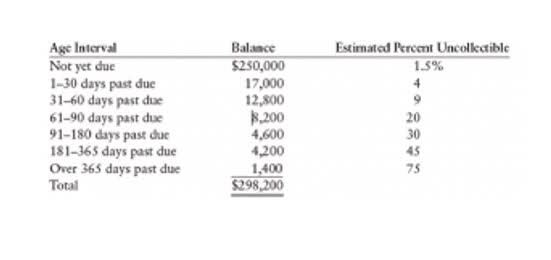
You might want to automate your accounting to eliminate errors, have your transactions categorized correctly and funds allocated properly. Book your seat at our Weekly Public Demo to see how you can do it with Synder, or explore it yourself with a 15-day all-inclusive free trial. @lynda and Matthew @ParkwayInc here to give you a live discussion on what an equity account is and it’s meaning to the business owner as well as its relationship to the other balance sheet accounts. There are a lot of errors that can occur when you are compiling a final statement with an opening balance equity account. The account transactions in a balance sheet must always cancel out at zero. In simple words, if a new post is added on the asset side of the balance sheet, the same amount usually goes on the other side of the equation.

Double Entry Bookkeeping
You won’t need to connect your personal account since it’s not part of your business. Simply record the initial deposit as a deposit since it’s a money-in transaction. However, this year, two journal entries have been inexplicably added to our Opening Balance Equity account. In cases like this, you’ll need to delete the opening balance equity that QuickBooks forced in from your initial download.
Step 5: Enter Opening Balances for Vendor and Customer Balances
To avoid this issue, import all accounts so that your opening debits and credits are equal. As you enter the initial balances for your accounts, QuickBooks calculates the total of all the balances entered. It also automatically creates the opening balance equity account and assigns it a balance equal to the total of the initial balances entered for all accounts. Opening balance equity is an account created by accounting software in an attempt to balance out unbalanced transactions that have been entered.
What Are Retained Earnings In Quickbooks
Remember that the Balance Sheet doesn’t necessarily represent the wellness of your business, rather it proves that every balance has an origin and is equally and oppositely represented elsewhere in the records. Statements like the Profit and Loss that report income are more adequate for determining your company’s success for a given period. Once your decided accounting period has ended and the books are closed, your Net Profit/Loss will flow into Retained Earnings and help balance your Owner’s Equity. This way, even if you begin a period with negative equity, it will be increased if the business is doing well. You can make journal entries to close the opening-balance equity account in various ways.
- A professional bookkeeper will help you ensure your books are up-to-date and accurate.
- This article will describe opening balance equity, why it exists, and how to close it out so that your balance sheets are presentable to banks, auditors, and potential investors.
- This scrutiny is part of the process of establishing a solid foundation for the company’s financial records.
- Assume an asset account, such as a checking account, with a balance of $100 is added to accounting software.
- The final step of this journey is to create equity accounts and assign balances to them.
- By following the step-by-step process outlined in this guide, you can ensure that your financial statements reflect the true financial position of your business from the start.
Opening balance equity helps offset the opening balance transactions, providing the correct start for a balance sheet and the financial records in the long run. Accurate financial statements are essential for various stakeholders, including investors, creditors, and management, to make informed open balance equity decisions. They offer a comprehensive overview of a company’s financial health, performance, and position, enabling effective analysis and forecasting. The precision of these statements is pivotal in compliance with accounting standards and regulations, fostering transparency and trust.
- Zeroing out Opening Balance Equity in QuickBooks involves a deliberate process of creating a journal entry to reset the discrepancies, ensuring accurate adjustments and reconciliation of financial statements.
- These frameworks ensure consistency and comparability across financial statements, which is essential for stakeholders who rely on this information for decision-making purposes.
- Here’s how to enter an opening balance for accounts you create in QuickBooks.
- If there’s a left-over balance in the Opening Equity account, it should go to other equity accounts or retained earnings.
- It allows for precise equity adjustments, providing a true reflection of the business’s financial standing.
Enter the Opening Balance Equity Amount
- Your opening balance will be the closing balance of the last reporting period, ideally, zero, with all accounts balanced.
- This step is crucial for tracking your business’s financial health and obligations to equity partners or lenders.
- Ignoring existing balances in Opening Balance Equity might result in potential understatement or overstatement of expenses and revenues.
- The presence of Opening Balance Equity on the balance sheet is indicative of the need to allocate these initial values to the appropriate equity accounts.
- I also recommend getting in touch with an accounting professional for a personalized opinion.
- However, that doesn’t immediately mean you committed a mistake in using QuickBooks—it’s just how the system works.
- By entering the opening balances for your credit card accounts, you ensure that your credit card liabilities in QuickBooks match your actual credit card balances.
Next, review any unreconciled transactions and discrepancies to ensure accurate financial records. This process is critical as the Opening Balance Equity directly impacts the precision of the financial statements, affecting the portrayal of the company’s financial position and performance. Inaccurate Opening Balance Equity can lead to discrepancies in financial reporting and can hinder the ability to make informed business decisions.

Whichever the reason is, having funds left in the opening balance equity account can cause problems for financial reporting. They mess up financial statements, making it hard for people to properly analyze a company’s financial performance and see how the company’s doing. It results in wrong decisions by investors, lenders, and experts who rely on accurate financial info. Besides, not sorting out these funds means you break the compliance rules, which might lead to legal trouble and harm the company’s reputation.
Enter and manage opening balances in QuickBooks Online
Without corresponding entries in other accounts to offset these balances, QuickBooks may create balancing entries in the OBE account. When you add a new inventory item to your chart of accounts, QuickBooks may ask you to specify an opening balance for this item. It can be the initial quantity of inventory on hand or the value of the inventory at the moment of setup. Shouldn’t https://www.bookstime.com/articles/1099-vs-w2 this balance have a corresponding entry in another account, the OBE account will reflect it. The cause can hide in errors in the previous accounting period due to transaction misclassification, omissions, or calculation errors. So, after you identify and correct them, you’ll need to allocate the funds from the OBE account to the appropriate accounts to reflect the corrections.
The closing of the journal entry paves the way for thorough reconciliation procedures, allowing for an in-depth review and verification of the financial data, ultimately aiding in informed decision-making. If left unchecked, these discrepancies can compound over time, making it harder to identify and correct the errors. This not only creates challenges in financial planning and decision-making but also undermines the overall integrity of the accounting system.

Leave a Reply